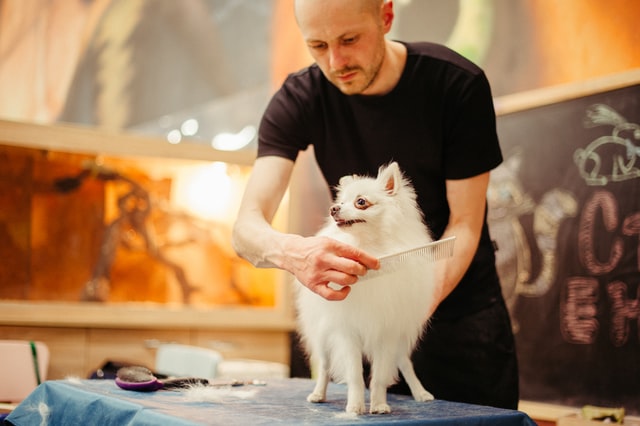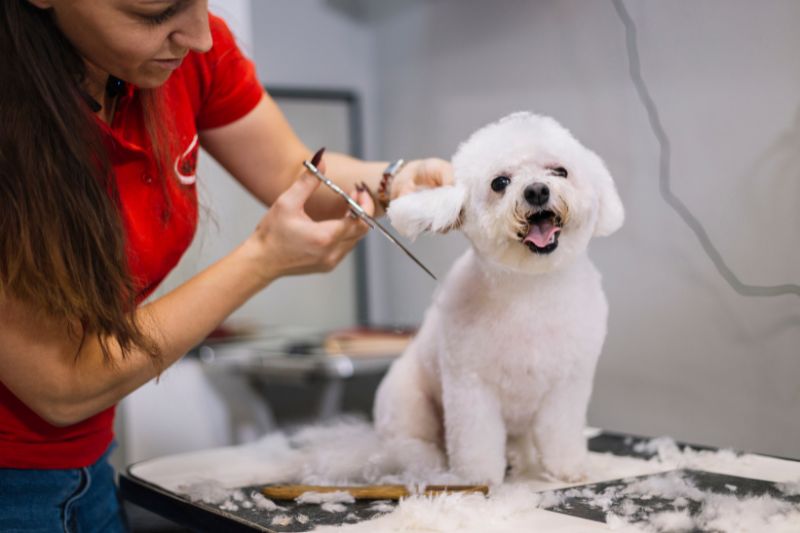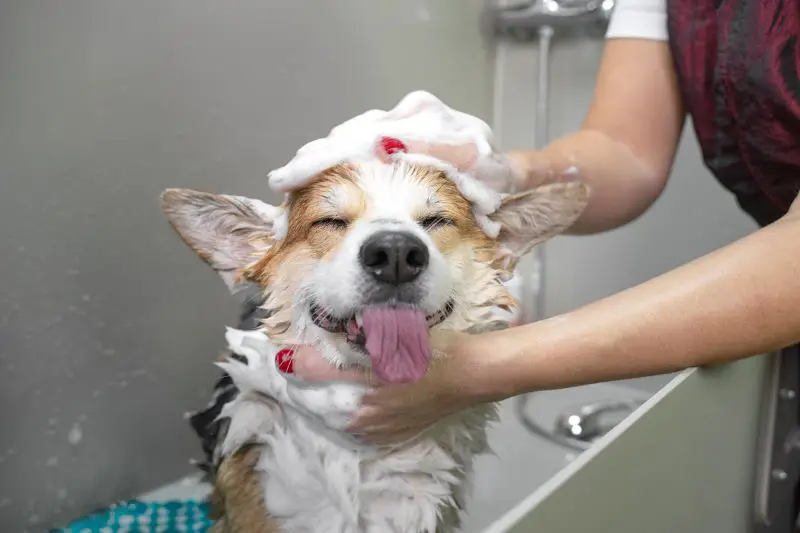
When it comes to dog grooming, you have two types of customers to contend with – the dog and its owner!
Different breeds of dogs require different styles and types of grooming. It’s important to tailor your services to the types of dogs that you are able to groom.
The target market for dog grooming actually refers to pet owners. In this article, we’ll review the demographics of pet owners, as well as their behavior and motivations when it comes to taking care of their pets.
So, if you’re looking to start a dog grooming business or improve your existing business, read on!
What is Dog Grooming?

If you’re reading this article, you already know what dog grooming is. But before we can discuss the details of the target market for dog grooming, it’s important that we define the term dog grooming and make sure we’re on the same page.
For the sake of this article, we will define dog grooming as follows:
Dog Grooming is the practice of cleaning, trimming and styling a dog to improve its appearance.
This is a very broad definition and doesn’t take into account all the different services that are included in most professional dog grooming businesses. But for our purposes, it will do just fine.
Examples of Dog Grooming Services
The types of services you can offer with your dog grooming service are only limited by your imagination!
Here are some common examples of services that many dog grooming businesses offer:
- Bathing
- Coat Brushing
- Massage
- Ear Cleaning
- Nail Trimming
- Removal of Fleas and Ticks
- Trimming of Face and Paws
- Teeth Brushing
- Special Hair Cuts
Most of the above services are useful for all breeds of dogs and if your dog grooming business is going to be breed-agnostic, you might want to consider providing most of the services on this list.

Dog Walking
How well do you know this market?
Who is the Target Market for Dog Grooming?
Now that we’ve defined Dog Grooming and listed the most common services offered by dog groomers, let’s see who’s included in the target market for dog grooming.

Broadly speaking we can categorize this market into the following segments:
- Single people with no kids
- Young Families with children
- Empty nesters
- Retirees
- Urbanites
Each of these segments has different motivations and exhibits behaviors when it comes to taking care of their pets. Remember as well that many of these segments may also need additional services which you could choose to offer.
For instance, the target market for dog grooming significantly overlaps with the target market for dog walking. So those who look for dog grooming may also need dog walking services and may be more inclined to hire a company that offers both services. Keep that in mind.
Now, let’s take a closer look at each segment of the dog grooming market.
1. Single people with no kids
Many single people with no children tend to take care of their dog rather like they would their own child.
They are likely to pamper their dog and want the best for them in terms of food, toys, and grooming. But they may not have the time to groom their dog themselves and could be willing to pay for professional services.
They are also more likely to spend money on impulse purchases for their pets. If they see a cute toy or accessory they’re likely to buy it on the spot without doing much research.
While single people with no children may make up a smaller portion of the target market for dog grooming, they are more likely to be high spenders when it comes to their pets. And so if you were to perform price segmentation on your target market you should target this segment with your premium offers.
2. Young Families with Children
This is the most obvious target market for dog grooming. They have the money to spend on their pets and they see their pets as extended members of the family. They are also the most likely to have multiple pets.
This target market is also likely to use dog grooming services as a form of preventative care for their dogs. They want to make sure their dogs are groomed and trimmed regularly to avoid any potential health problems.
Parents of young children are also often very busy just taking care of their careers and their children. They are ideal candidates to turn to a professional dog groomer to take care of their pet needs and save them time.
3. Empty Nesters
Empty nesters are people whose children have grown up and left home. To handle empty-nest syndrome, many of them will buy a dog for companionship.
They are also likely to have more discretionary income than families with small children still living in the house. And they will generally be willing to spend more money on their pets.
This segment of the market also tends to travel more. And so depending on the type of travel and the type of dog, your dog grooming business could attract visitors from other places who are traveling with their dog.
4. Retirees
Many retired people keep a dog for company as well as for security. Retired people on a pension can be on a fixed income and so they can be more price-sensitive when it comes to services like dog grooming.
Some retirees also have time on their hands and many of them enjoy taking care of their dogs themselves. But others may not find the physical task of grooming their dog to be appealing or feasible and may prefer to take their dog to a professional groomer.
5. Urbanites
Those living with their dogs in urban areas or large city downtowns may not have the space to groom their dogs at home. They may also live a fast-paced lifestyle and not have the time to groom their dog themselves on a regular basis.
For these pet owners, taking their dog to a professional groomer is often seen as a necessity rather than a luxury. They are likely to use your services on a regular basis and be loyal customers.
Summary
In conclusion, the target market for dog grooming is broad and includes single people with no kids, young families with children, empty nesters, retirees, and urbanites.
Each of these groups has different motivations and behaviors when it comes to taking care of their pets and selecting a dog grooming service.
It’s important to tailor your services to target different kinds of dogs and as many of these groups as possible in order to have the broad customer base necessary to be successful in the dog grooming business.
Thanks for reading! Good luck!
